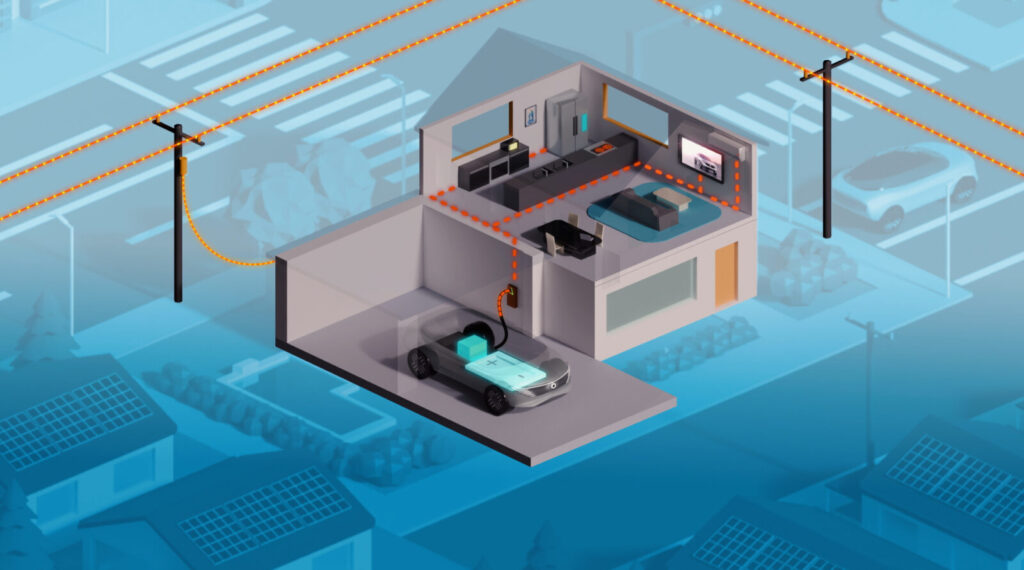Improving Energy Security, Increasing Renewable Energy Integration into the Grid
Nissan’s Vehicle-to-Grid (V2G) Technology
The increasing demand for electricity has led to a significant strain on the grid, and the primary challenge lies in effectively integrating renewable energy sources into the existing infrastructure. Vehicle-to-Grid (V2G) technology, developed by Nissan, offers a promising solution to this problem. V2G technology enables electric vehicles (EVs) to act as energy storage devices, providing a stable and reliable source of power to the grid.
How V2G Works
The V2G system is based on advanced battery management and communication systems, which enable EVs to charge and discharge electricity as needed. The process works as follows:
* When the vehicle is connected to the grid or another energy source, the V2G system is activated, and the vehicle’s battery is charged.
* Once fully charged, the V2G system can then disperse the stored energy back to the grid, acting as a power plant or energy storage device.
* This bidirectional flow of energy enables the grid to maintain a stable supply-demand balance, reducing the strain on traditional power sources and increasing the integration of renewable energy.
Benefits of V2G
The use of V2G technology offers several benefits, including:
* Increased energy security: By leveraging EVs as energy storage devices, V2G technology helps stabilize the grid and mitigate the risk of power outages.
* Improved grid flexibility: V2G enables the efficient integration of renewable energy sources, such as solar and wind power, by providing a reliable energy storage solution.
* Enhanced energy efficiency: V2G technology reduces the need for traditional power plants and transmission lines, resulting in lower energy losses and reduced carbon emissions.
Current Implementation and Future Development
Nissan has already implemented V2G technology in various projects around the world, including:
* A pilot project with the city of Tokyo, which has seen the successful integration of 100 EVs into the grid.
* A partnership with the UK’s National Grid to develop a V2G network, with plans to expand the project to up to 1,000 EVs in the near future.
As the technology continues to evolve, we can expect to see even more innovative applications of V2G, such as:
* Smart homes: With V2G, homeowners can use their EV battery to stabilize their energy supply and reduce energy bills.
* Commercial buildings: Large commercial buildings can benefit from V2G technology to reduce energy costs and increase energy efficiency.
Conclusion
Nissan’s V2G technology has the potential to revolutionize the way we interact with our energy grid. By leveraging the capabilities of electric vehicles as energy storage devices, we can improve energy security, increase renewable energy integration, and enhance energy efficiency. As the technology continues to develop, we can expect to see widespread adoption and significant benefits for both the environment and the economy.
FAQs
Q: What is Vehicle-to-Grid (V2G) technology?
A: V2G is a technology that enables electric vehicles (EVs) to act as energy storage devices, providing a stable and reliable source of power to the grid.
Q: How does V2G work?
A: V2G technology uses advanced battery management and communication systems to enable EVs to charge and discharge electricity as needed, acting as a power plant or energy storage device.
Q: What are the benefits of V2G?
A: V2G offers increased energy security, improved grid flexibility, and enhanced energy efficiency, resulting in reduced carbon emissions and lower energy costs.
Q: Is V2G limited to commercial applications?
A: No, V2G technology can be applied to both residential and commercial settings, allowing individuals and businesses to benefit from reduced energy bills and increased energy efficiency.



_2.png?w=150&resize=150,150&ssl=1)
.png?w=150&resize=150,150&ssl=1)


